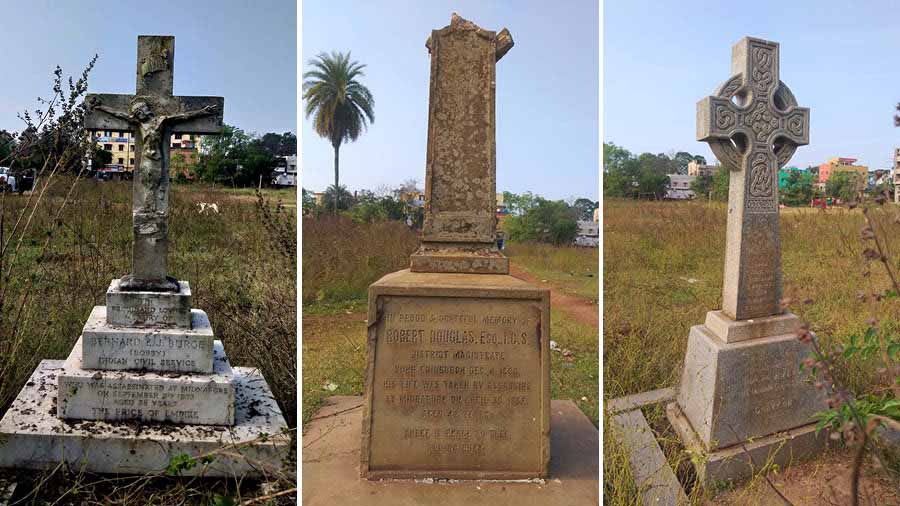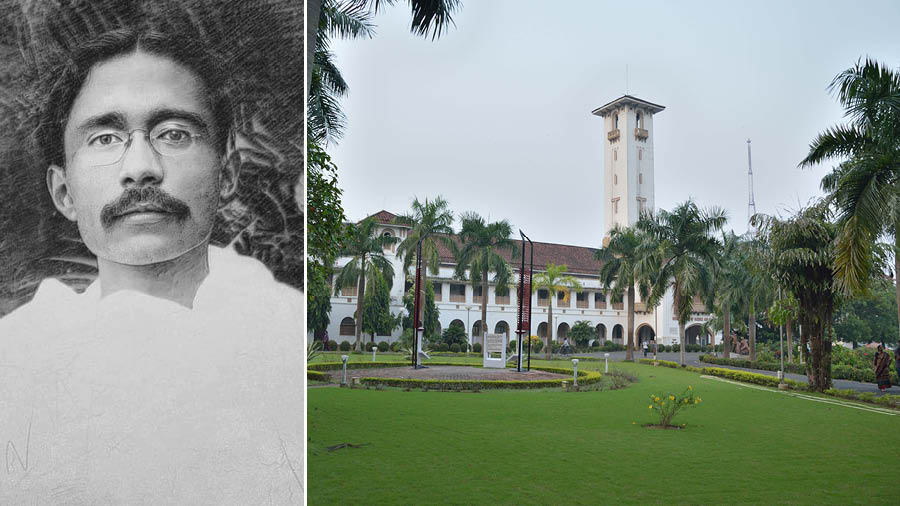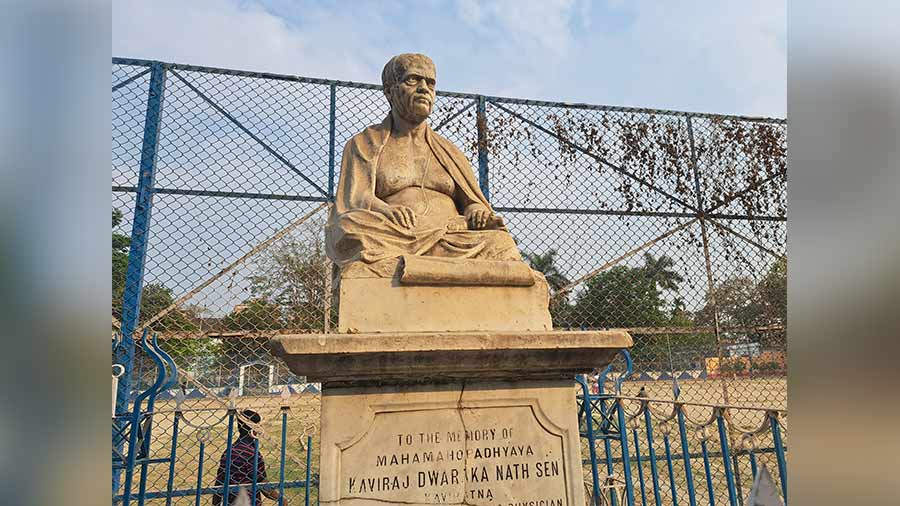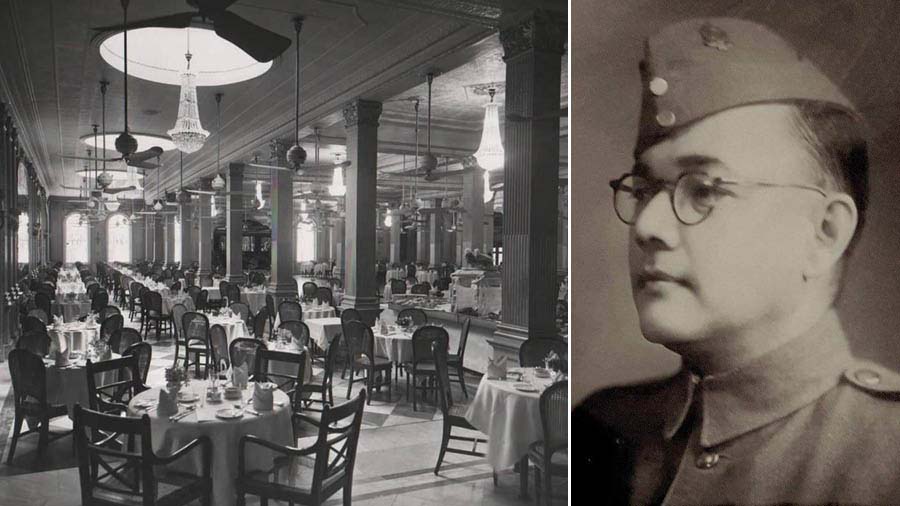In the compound of St. John’s Church in Midnapore town, three Christian graves lie in utter neglect, subject to constant vandalism. All three gravestones, adorned with beautiful marble and stone figures, have been ruthlessly vandalised and are now covered in wild vegetation, rendering them nearly invisible.
Reaching the graves is a tedious task — on a path through overgrown wild bushes, with rats, insects, and the foul smell of an open urinal. However, on reaching the spot, reading these inscriptions unveils a thrilling chapter of Bengal’s armed revolution.
In these graves lie three young British District Magistrates of Midnapore, who were all assassinated in a row, between 1931 and 1933, by Bengali revolutionists whose path of freedom was not in the line of Gandhi and Tagore.
These three assassinations, occurring in a span of three years in the same town, sent shockwaves across India. Following this, no British ICS officer was willing to assume the role of Midnapore’s administrative head.
Thanks to the impact of Japan defeating Russia in 1905, Ireland’s freedom struggle and finally the Russian Revolution in 1917, the aspiration of armed revolt against colonial rule in India was awakened from the early 20th century. Religious revivalism by figures like Swami Vivekananda, Bankim Chandra Chatterjee, and Lokmanya Tilak instilled a sense of civilisational pride in Indians, culminating in an armed revolution involving assassinations and physical attacks on European rulers.
Starting from Maharashtra, the incidents of assassinations moved to Punjab and Bengal where we would see a non-stop saga of political murders followed by unimaginable suppression and tyranny by the British police.
The three graves within the church complex of Midnapore are a stark reminder of this gruesome history.
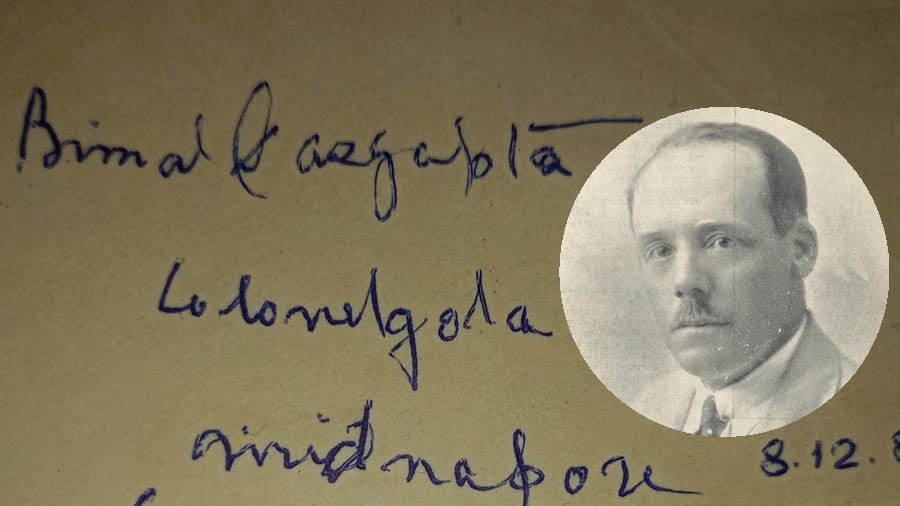
An autograph of Bimal Dasgupta, who shot (inset) James Peddie, a 38-year-old ICS officer from Springfield, was appointed as the DM of Midnapore From the personal collection of Arup Roy and www.midnapore.in
From 1920, thanks to Gandhi’s call for a Non-violent Movement, the armed struggle in Bengal and Punjab was subdued. However, it experienced a resurgence in Bengal from 1930 onwards with Surya Sen’s Chittagong armoury raid and the Writer’s Building expedition, shaking the foundations of British rule in India.
An assassination in Midnapore
James Peddie, a 38-year-old ICS officer from Springfield, was appointed as the DM of Midnapore. He adopted oppressive measures to curb revolutionary influence. Peddie ensured that Midnapore remained free of any revolutionary influence and this led to wanton arrests, raids and Draconian measures on common people.
Bengal Volunteers, an underground organisation led by one Hemchandra Ghosh, working on armed revolt decided to kill James Peddie and for this, two young revolutionists — Bimal Dasgupta and Jyotijeevan Ghosh — were selected. Bimal Dasgupta, a 21-year-old daredevil from Barishal, described the assassination of Peddie on April 7, 1931. In an interview with Arup Roy, a famous memorabilia collector, Bimal Dasgupta vividly described his act of killing Peddie on April 7, 1931, when the British official visited Midnapore Collegiate School for an exhibition.

An autograph of Prabhangshu Shekhar Pal, a member of Bengal Volunteers, who, along with Pradyut Bhattacharya, was assigned the responsibility of killing District Magistrate Robert Douglas From the personal collection of Arup Roy
Dasgupta informed Roy that the incident occurred in the evening when the room, where Peddie was viewing the exhibition, was lit by dim kerosene lamps due to the absence of electricity in the school. According to his account, he and Jyotijeevan Ghosh suddenly emerged from the crowd within the dimly lit room. They discharged five rounds from their American-made Webley revolver. With Peddie collapsing from the gunshot wounds, they swiftly left the premises, snatching a bicycle from a passerby, and made their way to Salboni station before eventually fleeing to Calcutta.
Peddie, wounded from the attack, succumbed to his injuries in hospital the following day.
Jyotijeevan was subsequently arrested and remained in jail until 1946, while Bimal Dasgupta was apprehended and dispatched to Cellular Jail for a 10-year sentence. Jyotijeevan later embraced the life of a sanyasi and mysteriously disappeared from his house in 1964. On the other hand, Bimal Dasgupta, following India’s Independence, managed a hotel in Midnapore town to sustain his livelihood.
During Subhash Chandra Bose’s stay in Punjab for a different purpose, he praised Bhagat Singh, asserting that India needed to produce thousands of individuals like Singh. This statement vexed Mr. Watson, the editor of The Statesman in Calcutta. On April 11, 1931, the newspaper vehemently criticised Bose, citing the “cowardly murder of Mr. Peddie”.
This incident exemplifies the profound impact of Peddie’s assassination in Bengal.
Peddie was laid to rest in St. John’s Church, with an elegant cross adorning his gravestone. His birthdate, August 9, 1892, in Scotland, and his demise on April 8, 1931, in Midnapore, are inscribed at the base of the cross. Beneath this, the stone also bears the inscription: “Erected by his family and brother – Members of Indian Civil Service – Carry On.”
Aftermath, brutal measures and a second attack
Following Peddie’s tenure, Midnapore welcomed a new District Magistrate by the name of Robert Douglas, a 42-year-old Scotsman born in Edinburgh, who was also a good cricketer. Douglas embraced a policy that surpassed even Peddie’s brutality. It was under his watch that a tragic incident occurred — an open fire on the prisoners of Hijli jail on September 16, 1931, resulting in the loss of the lives of Tarakeshwar Sen and Santosh Kumar Mitra.
In the aftermath, Douglas’s investigation report placed the blame on the Indian prisoners, sparking a significant outcry across Bengal.
It upset Rabindranath Tagore and he joined the protest meeting in Calcutta maidan and wrote a strong letter to the editor of The Statesman as the paper was blindly supporting Douglas’s decision of firing. Surprisingly the letter written by Tagore was returned to him by The Statesman editorial office saying it was unfit to publish in the paper. This is perhaps the only write up of Tagore that was rejected by a newspaper house when he was at the zenith of the literary world. Tagore, in the protest of this firing, wrote his epochal Bengali poem, Prashna (The Question).
Seeing the tyrannical attitude of Douglas, Bengal Volunteers awarded him death and this project was to be executed by Pradyut Bhattacharya and Prabhangshu Shekhar Pal.
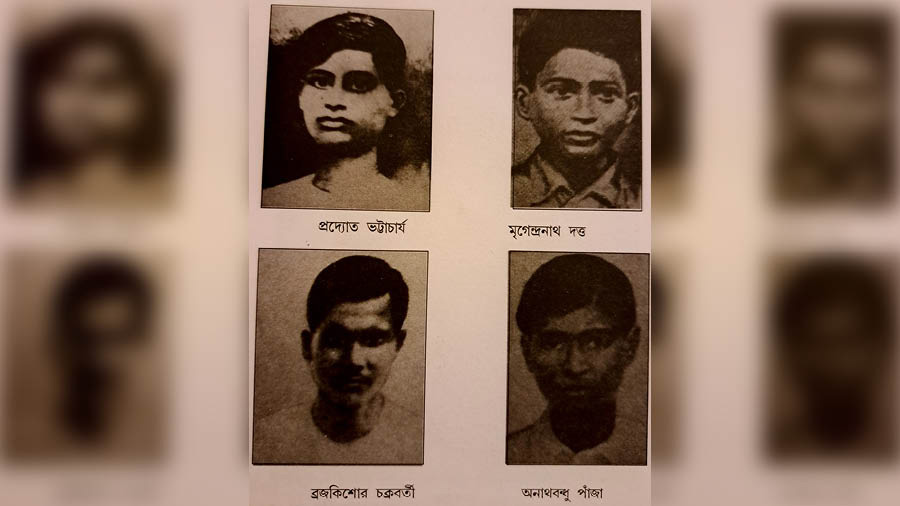
A newspaper cutting of revolutionaries (Clockwise) Pradyut Bhattacharya , Mrigendranath Dutta , Anathbandhu Panja and Brajo Kishore Chakraborty www.midnapore.in
It was impossible to reach Douglas at that time as his security was beefed up and he hardly ventured out. He shifted his office inside his residence for security reasons and used to come out only to attend monthly district meetings. He used to travel in a car and with heavy security to the office of District Board, which was very close to his residence. Both the boys tried many plans to reach him from November to March 1932, but failed.
A pivotal opportunity came on April 30, 1932. Armed with German and American revolvers, both young men entered the board office through the rear entrance. Stealthily making their way into the meeting room, they discovered Douglas seated with his back to the door. Swiftly and decisively, the two boys unleashed a barrage of bullets into Douglas’s neck and head, ending his life within a matter of seconds. The boys swiftly fled the scene, yet Pradyut was apprehended and taken into custody. He met his demise through execution at Midnapore Central Jail on January 12, 1933. Prabhangshu, on the other hand, faced arrest at a later time and endured a six-year prison term. He died on June 2, 2007, at the age of 94, leaving behind a remarkable collection of thrilling anecdotes from his encounters, as gathered by Arup Pal in an illuminating interview.
In due course, Robert Douglas found his final resting place alongside Peddie.
Adorned with an exquisite stone cross, his grave has unfortunately fallen victim to recent acts of vandalism, leaving it marred and broken. Etched at the base of this cross is a heartfelt dedication: “In Proud & Grateful Memory of Robert Douglas.” His birthdate, December 4, 1889, in Edinburgh, is inscribed alongside the solemn reminder that “his life was taken by assassins at Midnapore on April 30, 1932”. Beneath these poignant words, a reassuring inscription reads, “There is peace to thee and no hurry.”
The dual murders of two British District Magistrates within a mere span of one year and 23 days sent shockwaves through Bengal. This calamity dealt a devastating blow to the British administration, leaving the prospect of another British ICS officer assuming control over a district like Midnapore nearly impossible.
Death on a football field
In a remarkable turn of events, a 38-year-old man named Bernard EJ Berge — affectionately known as Bobby to his friends and family — courageously stepped into the role of Midnapore’s District Magistrate. It was a duty that any of his fellow batchmates would likely have shunned during that period. Relocating to Midnapore with his wife and daughter, Berge’s security became a personal priority for his wife, who undertook thorough interviews before permitting anyone to meet him.
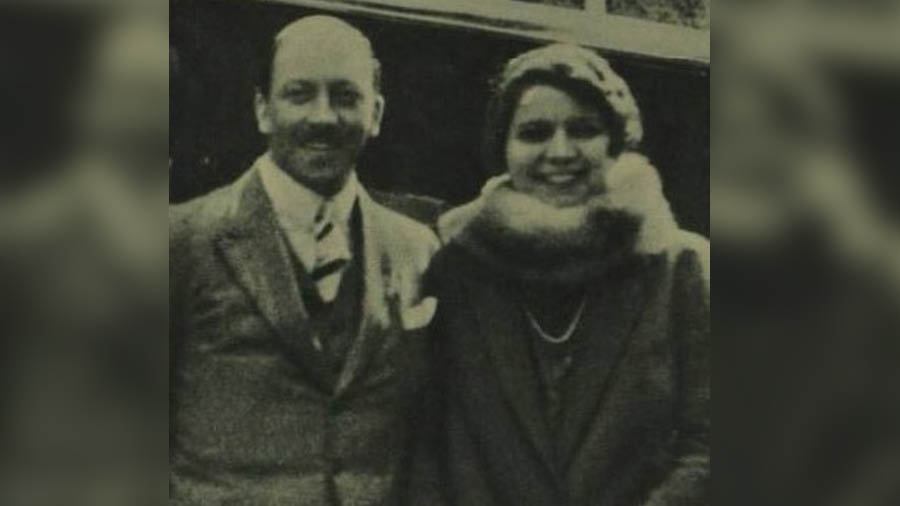
Bernard EJ Berge with his wife www.midnapore.in
During this period, the consecutive successes of the Bengal Volunteers had left them thirsty for more, and their impact reverberated strongly when they attempted to assassinate Police Inspector Evence in Midnapore. Similar to Douglas, Berge rarely ventured outside his residence and was seldom seen at public events. Despite the stringent security measures, there were multiple attempts on his life.
Berge, an avid football enthusiast and former captain of the Ballygunge Cricket Club, once made the decision to participate in a football match at the Midnapore football ground. This exhibition match pitted the Town Football Club, of which he was the President, against the Mohammedan Sporting Club. On September 2, 1933, the ground was densely packed, especially by enthusiastic supporters of the Mohammedan Sporting Club. Berge and his security team exuded a sense of overconfidence, convinced that no harm could possibly come to them in a public setting, particularly on a football field — a game cherished equally by both British and Bengalis.
Amidst that sea of spectators, awaited five determined young Bengalis, each carrying hidden firearms in their clothes. Among them were Brajo Kishore Chakraborty, aged 20; Ram Krishna Roy, also 20; the 17-year-old Nirmal Jeevan Ghosh; Mrigen Dutta and Anathbandhu Panja, aged 22. All of them had undergone training in Calcutta and had arrived in Midnapore armed with firearms. The group was led by Brajo Kishore, an active member of the Midnapore revolutionary faction, who continued his involvement even after several members were apprehended in connection with the Dougal murder case.
At precisely 5.30pm, as Berge disembarked from his car donned in a football jersey, en route to the police football ground, he was met with a sudden onslaught of eight bullets fired from an alarmingly close distance. The scene erupted into chaos. Amid the turmoil, two police officers from Berge’s security detail, Philip Norton and Charles Oliver Smith, retaliated with their own gunfire. The exchange resulted in the immediate demise of Anathbandhu and mortally wounded Mrigen, who succumbed to his injuries the following day at the hospital. The remaining three assailants were swiftly subdued by a resolute local crowd. Notably, this marked the first instance in the past three cases where none of the assassins managed to escape the scene.
All three were apprehended and sentenced to death on November 3, 1933. Brajo Kishore and Ram Krishna were hanged on October 25, 1934 and Nirmal was hanged the next day within the confines of Midnapore Central Jail. Additional valiant souls implicated in this case, such as Sukumar Sengupta, Nandadulal Singh, Shanti Gopal Sen, and Kamakhya Charan Ghosh, received life imprisonment sentences.
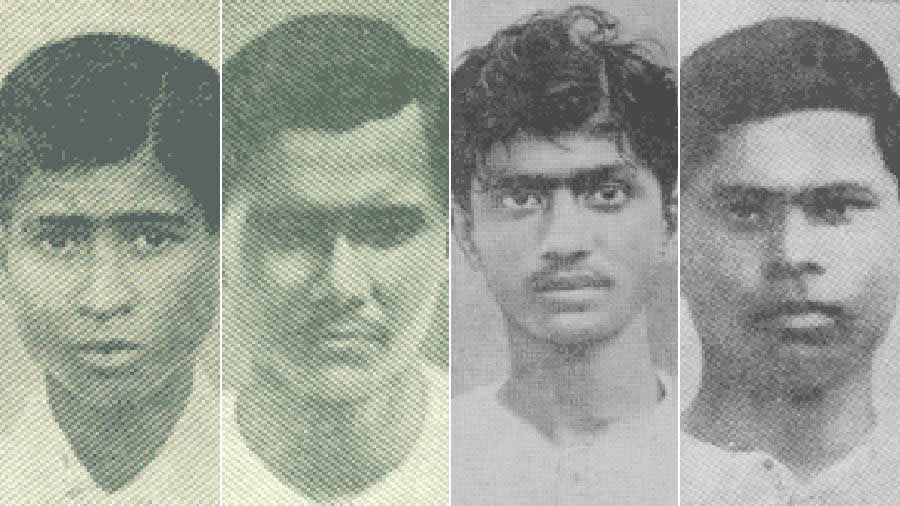
Brajo Kishore Chakraborty (second from left) along with co-volunteers who shot Burge www.midnapore.in
Football lover Berge met the same end as his two ill-fated predecessors. He found his final resting place in the hallowed grounds of St. John’s Church. A white marble grave, bearing an image of Jesus crucified on a cross, stands as a tribute to his memory. Etched into the pediment, one finds an inscription proudly and lovingly commemorating Bobby, who met his untimely demise in Midnapore on September 2, 1933. At the base of the grave, a sombre inscription reads, “THE PRICE OF EMPIRE” — a sentiment that resonates with poignant clarity.
From that day until India’s long-awaited independence on August 15, 1947, the district of Midnapore never again welcomed a British DM. Subsequently, the district experienced a period of relative tranquility, until the tumultuous events of 1942 unfolded with Gandhi’s impassioned call for Quit India and the establishment of the Tamralipta Swadhin Government.
Nonetheless, this chapter stands as a separate episode in history.
Special thanks: Arup Roy, Osman Mallick and Sumit Ganguly.
